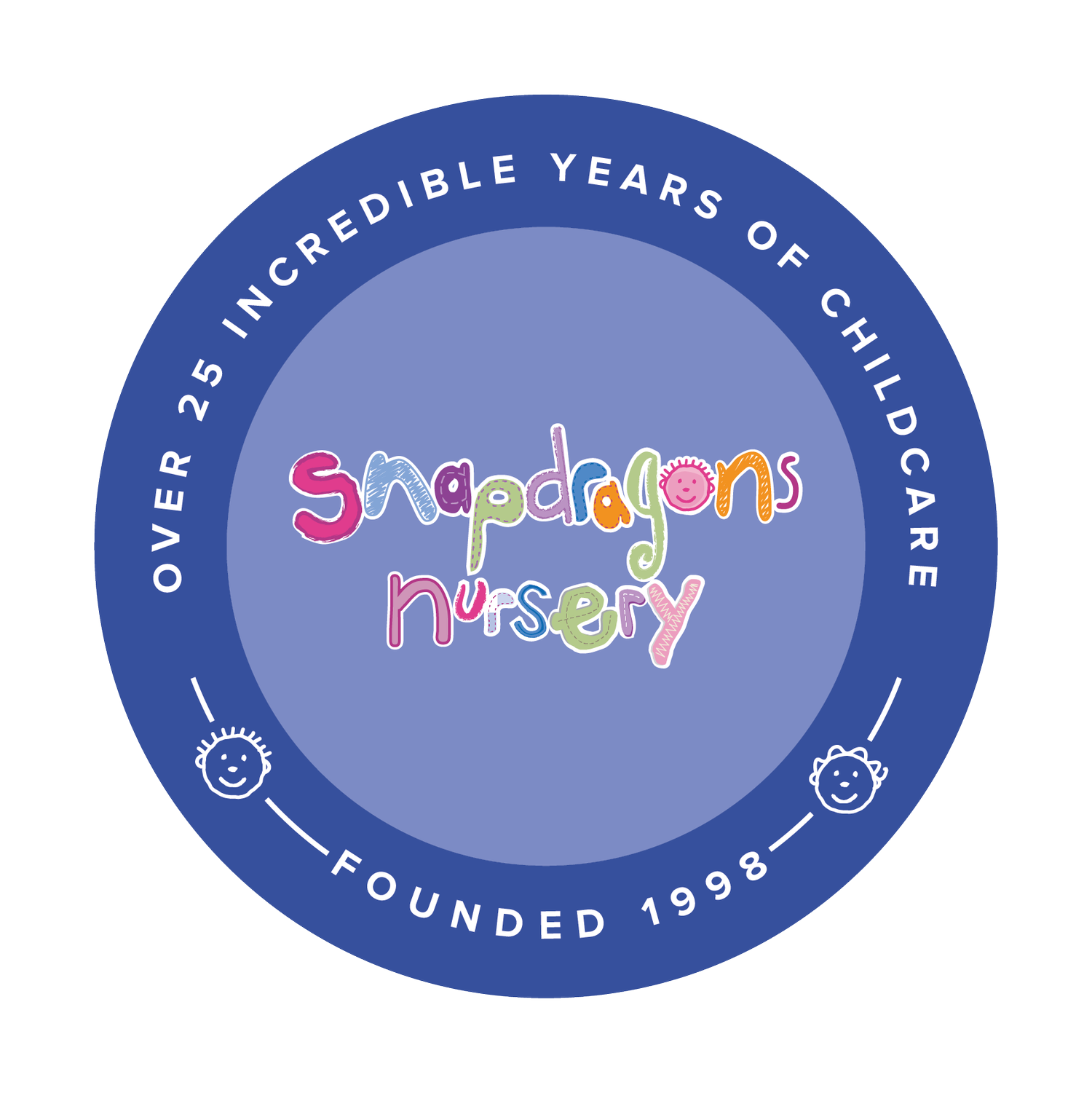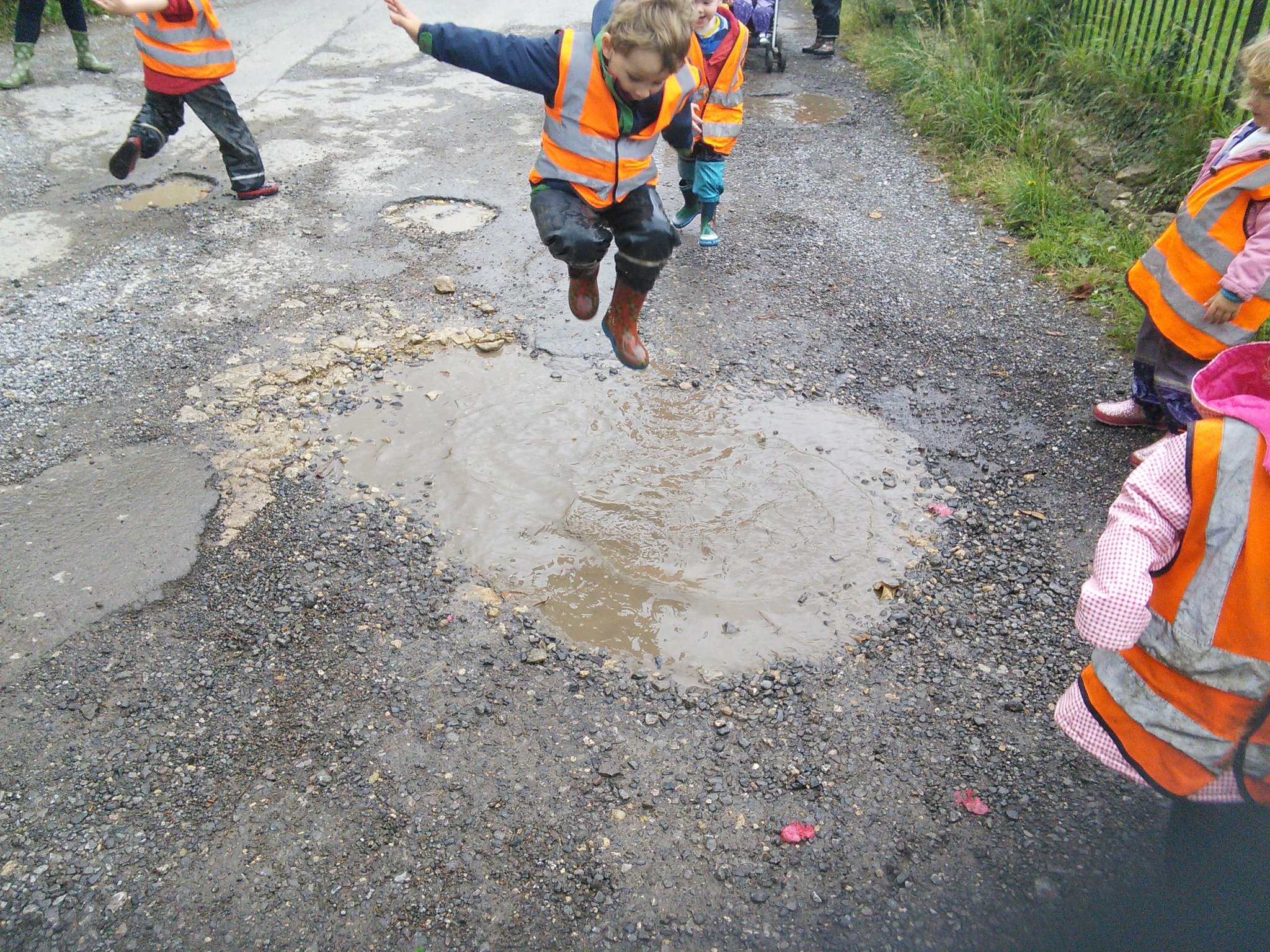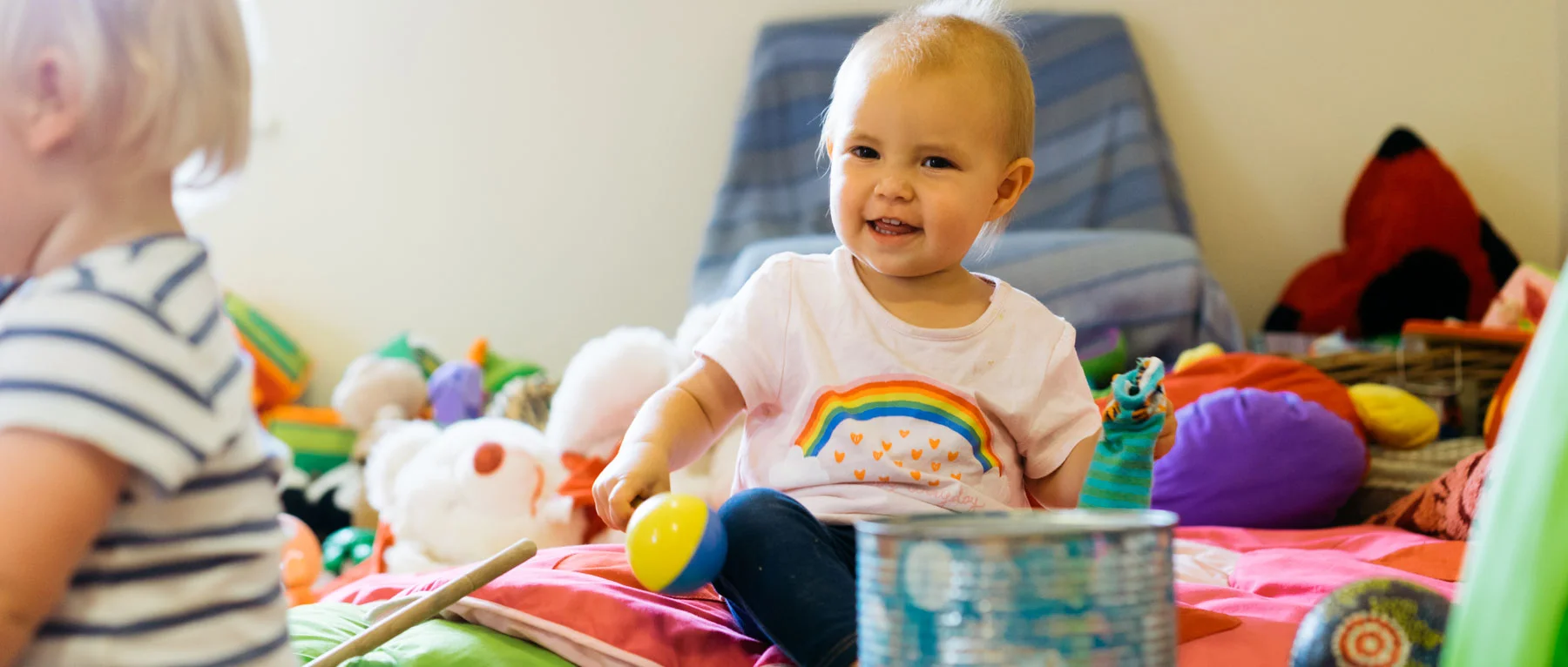
Ten Stick
On a training course in Cornwall this Summer I had the great opportunity to have a masterclass in outdoor Maths by Juliet Robertson (her Messy Maths book is out now); ideas, tips, games and activities filled the 45 minute session and left me with a long list of things to introduce into my practice.
The first thing I did when I got back home was to take one of my hazel walking sticks (yes I have several) , saw the top off to make it a metre long and then cut notches every ten centimetres. This transformed a once ordinary pole into THE TEN STICK!!
What does it do you ask?
It measures the length of flowers, grasses, trees and other sticks when we need things to be a certain length. It tells us the depth of a puddle so we know if it will come over our wellies. When we put things next to the notches it tells us how many things we have collected and spaces them out so it's easier to count them. It can even tell us the circumference of a tree if we wrap some string around it first and then lay it flat. The first time the ten stick came on a walk it even worked as a (wait for it) WALKING STICK to show who the leader was of the group!
The ten stick provides a simple way to measure amounts for young children and helps them to understand amounts in a visual and tactile way. It now accompanies me out of most forest school sessions and it always gets used.
Not bad for a bit of hazel...
P.S The next time you're in a woods try this simple way of measuring how tall a tree is!
Splish, splash, splosh!
The other weekend, my husband and I were in charge of our grandchildren, Poppy, aged 4, and Parker, 22 months. Of course the weather helped by doing its best and poured all weekend, so any well-laid plans were hastily changed.
Wet weather gear was put on and out we went. I had forgotten the pure joy that jumping in puddles can bring. The grandchildren took great delight in finding the largest puddle and jumping as many times as it took to empty it. Squeals of delight and joyous laughter could be heard for miles.
The grandchildren then found some leaves and spent ages watching them float and being carried along until, eventually, they lodged at the edge of the puddle creating a dam. Sticks were then sought to extend the dam and then there were more squeals of delight when the dam burst and the water ran over their wellies.
Without realising it my grandchildren were learning so much and when we got home they talked endlessly about it. Questions about where the rain comes from, where does it all go, why is it that colour? Was it warm, how much water is there when it rains, can you drink it? The questions didn't stop.
As it was raining again the next day, water play was the plan; the children thought of ways of collecting the rain, ways to measure it, etc, to answer their own questions, mainly from Poppy the older grandchild. Parker was happy following his older sister in all her play.
All of this made me think, how we can support children's play with very few resources, using what is around us. Next time it's been raining, get outside and see what fun you can have. Dropping stones in a puddle to listen to the noise, seeing how big the ripple can be and what happens when you use bigger or smaller stones? Find some leaves and twigs to make small leaf boats that can float; use stones to make rapids on the river; think how and what we can collect water in, how we can re direct it, make it move slower or faster.
Next time I was in one of the nurseries, I checked to see how water was being used. One room were tipping, pouring, dripping water into a variety of different receptacles, the water had glitter in it to add another dimension. There was a range of alliterative vocabulary: "plop", "splish", "splash" and "splosh" as well as early maths language like "lots of", "more water", "big", "small", and lots of counting.
In another room, they were washing dolls in warm, bubbly water. Children were tenderly washing the dolls, keeping the bubbles away from their eyes. Washing the dolls' hair took a lot of skills, pouring the water on, making a lather and rinsing it off. Others were drying the dolls and dressing them and some children could be heard talking and singing to their dolls. So many skills from just a bowl of bubbly water.
Outside, children were making magic potions with water, leaves, sticks and feathers. In the mud kitchen, children were happily mixing dirt and water to make 'cakes'. One practitioner had filled trays with water and children were lining up to splash in the 'puddles'. Guttering was in use, children were making a track for the water to travel down. It was wonderful to see them working together, telling each other what to do, helping each other and developing the play. They decided to see how far the water could travel and soon worked out that sloping the guttering helped.
So, next time you look outside and it's raining, imagine all the endless fun you can have!
Broadly Speaking
I love broad beans; in fact I think they are one of the tastiest and most versatile vegetables going.
They’re delicious raw when they’re young and sweet, great pureed and mixed with mint, lemon and a splash of oil for a quick and easy dip; crushed and paired with goat’s cheese for an easy crostini topping; added into casseroles and risottos; lightly blanched and scattered into a mixed salad, or – my favourite – combined with other early summer vegetables like tender stemmed broccoli, peas, asparagus, artichoke hearts and spring onions all lightly steamed and tossed with a lemony dressing, a sprinkle of parsley and maybe some chilli flakes while still warm.
Imagine, then, my greed and excitement when I visited the Keynsham garden and saw a bumper crop of fresh green broad bean pods nestling amongst their leaves, swollen with the promise of the sweet, juicy beans inside. Who remembers from their school days that quirky celebration of harvest that is the “Cauliflowers Fluffy” song with the memorable chorus: “The apples are ripe and the plums are red, The broad beans are sleeping in their blankety bed”? Not me obviously, I’m far too old, but I did learn to love it when my children were at school. Splitting a ripe pod and gently prising it open to reveal a neat row of bright green beans nestling snugly in their downy white bed tends to bring on an “isn’t nature great” moment for me!
Anyway, Tim introduced the children to the joys of a broad bean as soon as he spotted that they were ready for picking in the Keynsham garden. They loved hunting for ripe pods and opening them to discover the treasure inside. As I said, baby broad beans need no additions so are perfect for a children’s garden. Easy to grow, fun to harvest and delicious eaten straight from the pod to introduce the children to the joy of growing their own vegetables and eating them at their freshest, still warm from the summer sun and bursting with flavour and vitamins.
We wanted to use some of the beans in this month’s Nursery Kitchen video and, in honour of a visit from the Norland Japanese summer school students, we decided to make our own sushi using the beans and some other seasonal vegetables. It’s certainly not complicated to do and it’s something children can easily get to grips with using their own choice of fillings. Ours were vegetarian but smoked mackerel makes a tasty addition and works wonderfully with the beetroot one. Apologies to our Japanese visitors for any lack of authenticity!
“Fee Fie Fo Fum!” - Traditional Tales at Snapdragons
Each month we focus on a well loved story as we believe that storytelling and a love of books are vital in providing a firm foundation for our children’s communication and language development, and readiness for reading and writing.
The stories we have chosen include modern favourites such as The Very Hungry Caterpillar, Peace At Last and We’re Going on a Bear Hunt. We also like to focus on those enduring classic folk tales which we all remember from our childhood such as; The Three Little Pigs, The Three Billy Goats Gruff, and Little Red Riding Hood.
Our planning incorporates the story of the month, and many fun activities grow from the ideas sparked by the children’s interest and enjoyment in the story’s characters and events. Our children are currently exploring ideas surrounding “Jack and The Beanstalk” with cries of “Fee Fie Fo Fum!” resounding from every corner of our nurseries!
Activities include exploring the variety of different leaves in the local environment and using their creative skills to make leafy Beanstalks of their own. Beans have been planted in clear bags so the growth of shoots and roots can be observed. Story maps full of imaginative ideas have been plotted using drawing, early writing and mark making. Alternative versions of the story are being shared so the perspective of the Giant is considered and different feelings explored. Role play corners have giant sized tables, bowls and plates fit for a Giant. Construction areas are busy building castles, and magic beanstalks have sprouted and grown up through the ceiling in many of our playrooms!
Like so many of the traditional tales, the story of Jack and The Beanstalk has been passed down through the generations, surviving through storytelling. Jack and the Beanstalk was recorded as “The Story of Jack Spriggins and the Enchanted Bean” and “Jack The Giant Killer” in the 17th and 18th century. However, research has now revealed that this story and other folk tales actually have much earlier origins than previously thought. Many have been traced back to more than 5,000 years ago!
The Giant has gone by many names over the years, including “Blunderbore”and “Gogmagog”, but his familiar cry of “Fee, Fie, Fo, Fum! I smell the blood of an English man” remains. This seemingly nonsense phrase is thought to be Gaelic in origin and has a meaning of disapproval and anger. “Fie, foh and fum, I smell the blood of a British man” features in Shakespeare’s King Lear.
Whatever the origin, it is repeated phrases such as this that enable children to remember and join in with the story with enjoyment. We like getting the children actively involved, getting up and becoming the characters, stomping like the giant or climbing the beanstalk as Jack. So with each of our traditional tales we encourage not only sharing the book of the story, but telling the story ourselves, carrying on this age old tradition, and hopefully our children will pass this down to their little ones one day too!
What's the point of nursery rhymes?
Who cares if Humpty was put together again and does it really matter if Little Bo Peep lost her sheep?
Research says it does. 'Nursery rhymes and rhyming games are an ubiquitous part of childhood" (Opie and Opie 1987).
Daily singing and action nursery rhymes are proven to help your child's development of language, communication, literacy, mathematical and social skills
When you have your first born, you excitedly start to sing nursery rhymes that you learnt as a child, the start of the melody is like a little key inside your head that unlocks the rest. But as you sing it for 97th time that day, you tire. This raises the question, just how important are they? The fact that you remember them indicates that we store them and relate to them when we need to.
The repetition of the rhyme helps your baby / child with phonological skills, your child's ability to recognise the sounds and syllables that make up language. For some children this will happen without much effort, it just happens naturally, but for some this has to be a learnt process. They help with listening skills, learning about emotions and social skills.
Rhymes and rhymes with actions will further support this. Your child learns rhyme production, detection and oddity. They will be able to add words and recognise patterns in words. Children enjoy singing them. In nursery it's a social experience as we learn something with our friends and it's a familiar link between home and nursery.
Speech and language improves with nursery rhymes - the range and tone of words, can all be picked up from nursery rhymes. Children who know their nursery rhymes are better equipped to be more confident readers and to develop mathematical skills from counting rhymes to size concepts.
It can be an activity that spans the generations: grandparents and grandchildren can enjoy them together and compare the changes to the traditional rhymes, e.g. Twinkle Twinkle Little Star to Twinkle Twinkle Chocolate Bar.
Most of all they are fun! Singing nursery rhymes together relaxes you and your baby and baby is learning from the visual and oral experience at the same time as building and strengthening your relationship.
So it seems it is important to know that Humpty did fall and couldn't be put back together again.























